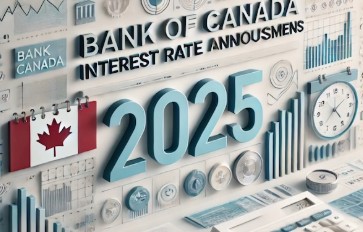Canada’s economy may have concluded 2024 on a positive trajectory; however, this progress could be jeopardized by the disruptions in global trade stemming from Donald Trump’s tariff policies, as indicated in a recent report by the Organization for Economic Co-operation and Development (OECD).
On Monday, the OECD revised its growth forecast for Canada, reducing it by more than half, and warned of potential repercussions on inflation and interest rates. This could lead to an increase in borrowing costs that may persist for an extended period if Canada faces 25 percent tariffs from the United States, along with reciprocal measures. The analysis also considers the tariffs imposed between China and the United States, in addition to the broad 25 percent tariffs on steel and aluminum imports from Washington, which affect Canada as well.
The OECD provided insights regarding Canada’s economic outlook.
Growth Expectations
The OECD now anticipates that Canada’s gross domestic product (GDP) will grow by 0.7 percent this year and the next, a decrease of 1.3 percentage points from its earlier forecast in December.
The uncertainty surrounding tariff policies is expected to adversely impact Canadian businesses and households, compelling them to curtail spending on capital investments and durable goods, according to the report.

Canada’s growth forecast ranks among the lower estimates provided by the OECD, which has downgraded the outlook for most of its 38 member nations. Mexico, also targeted by Trump’s tariffs, is the only country for which the OECD predicts an economic contraction of 1.3 percent over the year.
In contrast, the U.S. economy is projected to grow by 2.2 percent this year, a reduction of 0.2 percentage points from the previous report, and by 1.6 percent next year, down 0.5 percentage points.
Should the U.S. extend tariff exemptions beyond April 2 for goods compliant with the Canada-United States-Mexico Agreement (CUSMA), Canada’s growth outlook for this year and the next would significantly improve.
In such a scenario, Canada’s growth is expected to reach 1.3 percent in 2025 and 2026, while Mexico could avoid a recession, provided that both countries reduce any retaliatory tariffs.
Inflation
Should widespread tariffs be implemented, Canada’s overall inflation rate is projected to increase by 1.1 percentage points in 2025, reaching 3.1 percent, before easing slightly to 2.9 percent in 2026. The inflation rate recorded in January was 1.9 percent.
Core inflation in Canada is anticipated to rise to 3.1 percent in 2025, surpassing the upper limit of the Bank of Canada’s target range. The OECD report cautions that one significant risk associated with these tariffs is their potential to heighten inflation expectations.
Policymakers at the central bank express concern regarding increasing inflation expectations, as they can influence the spending behaviors of both businesses and households, as well as lead to heightened wage demands from workers seeking to counterbalance anticipated increases in living costs.
By the end of 2024, inflation expectations seemed to align with the objectives of central banks; however, there are emerging indications that they are beginning to rise again, particularly in the United States.
The OECD also highlighted that escalating inflation expectations coupled with slowing economic growth could result in a swift adjustment in financial markets and an increase in market volatility.
Interest Rates
The OECD report indicates that widespread trade barriers and elevated tariffs would contribute to a global rise in inflation, consequently leading to an increase in interest rates.
Recently, the Bank of Canada reduced its interest rate by 25 basis points to 2.75 percent, while emphasizing the importance of monitoring inflation in future rate-setting decisions.
In the OECD’s most pessimistic scenario regarding tariffs, it predicts that interest rates in Canada could rise by 1 to 1.25 percent, which is higher than the anticipated increase of 0.25 to 0.5 percentage points for other major economies.
Furthermore, it suggests that interest rates may need to remain elevated for a longer duration than previously anticipated as the impact of tariffs is passed on to consumers.
The OECD noted that policymakers could continue to lower interest rates, but only under a “lighter tariff scenario,” where the effects of slowing growth balance out the rising prices of goods.
The Bank of Canada typically announces interest rate decisions eight times a year. Below is the official schedule for 2025:
| Announcement Date | Publications | Time (ET) |
|---|---|---|
| January 29, 2025 | Interest rate announcement and Monetary Policy Report | 10:00 AM |
| March 12, 2025 | Interest rate announcement | 10:00 AM |
| April 16, 2025 | Interest rate announcement and Monetary Policy Report | 10:00 AM |
| June 4, 2025 | Interest rate announcement | 10:00 AM |
| July 30, 2025 | Interest rate announcement and Monetary Policy Report | 10:00 AM |
| September 17, 2025 | Interest rate announcement | 10:00 AM |
| October 29, 2025 | Interest rate announcement and Monetary Policy Report | 10:00 AM |
| December 10, 2025 | Interest rate announcement | 10:00 AM |








